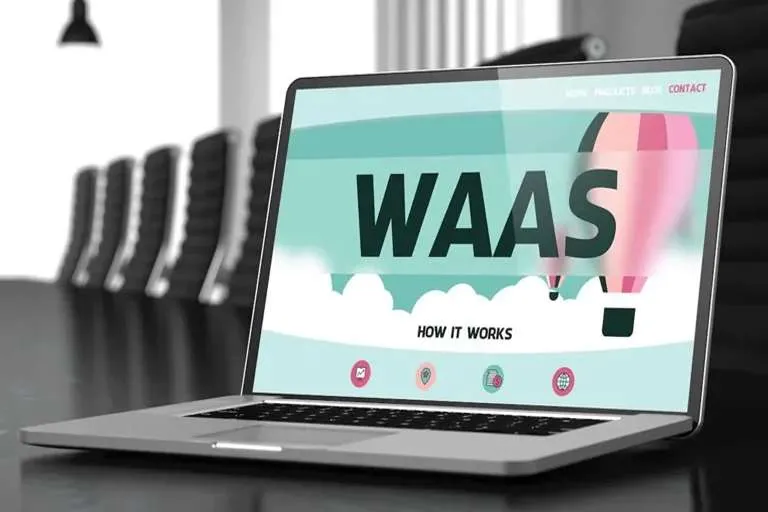As the crypto industry continues to develop, businesses look for safe storage options. Wallet as a service (WaaS) platforms facilitate integrating multiple payment options without building infrastructure from scratch. Democratizing access to digital assets is the first step toward widespread cryptocurrency adoption. In this guide, we will explore the main WaaS components and provide a complete overview of such solutions.
Understanding Wallet-as-a-Service
WaaS is an easy-to-scale digital product that allows enterprises to utilize efficient crypto asset management tools. It enables companies to provide storage services based on blockchain. WaaS is often used by dApps developers and ventures seeking to create wallets with advanced security features that enable users to control their private keys.
While many crypto exchanges allow traders to access hot wallets, they do not offer security guarantees. Building WaaS requires a high level of technical expertise. However, a white label digital wallet created by experts allows firms to optimize resource usage and meet the needs of their target audience. WaaS products stand out for their powerful key recovery options, low fees, and top-notch security.


Turnkey Brokerage Solution For Your Business
Get the most profitable fully licensed fx/crypto brokerage software or ready-to-operate business in 48 hours. Best-in-class web & mobile trading platforms, sales-driven CRM, full integration with MT4/5, and 150+ payment providers.
Key Features of Wallet-as-a-Service
The usage of WaaS enables businesses to store their crypto assets safely. They have multiple components catering to the needs of enterprises. Below, we have outlined them in detail:
- API integration: Using powerful APIs, companies integrate wallets with online platforms to expedite transactions, streamline authentication, and simplify wallet management.
- Security tools: Providers deploy top-grade encryption, 2FA, and key management practices to prevent third parties from accessing user funds.
- Features for processing transactions: Wallet owners start and monitor transactions and update their balance.
- Customizable UI: Dedicated tools enable firms to personalize user experience (UX) and maintain a strong brand identity.
These components enable ventures to meet AML/KYC regulations and enhance UX.

Why Do Companies Need Wallet-as-a-Service?
There are multiple upsides to utilizing WaaS, with the main one being the simplicity of deployment. Firms use APIs and SDKs to quickly add such solutions to their platforms. Below, we have described other notable benefits:
- Short time-to-market: Enterprises leverage existing infrastructure to make a crypto wallet accessible to clients. Spending less resources on development means they can allocate them elsewhere.
- Robust security: Web3 wallets safeguard user assets against threats. Multi-purpose computational (MPC) technology minimizes the risk of key theft.
- Affordability: Instead of wasting money on costly infrastructure, ventures use a wallet as a service to reduce spending.
- Scalability: Achieving sustainable growth necessitates handling increasing transaction volumes. WaaS platforms enable businesses to achieve consistent development.
Due to the streamlined integration of WaaS solutions, companies improve UX and increase user engagement.
Comparing Wallet-as-a-Service and Third-Party Custodians
WaaS enables users to access different types of web3 wallets. Many exchanges act as third party custodians that control users’ private keys. Those who utilize DeFi and NFT platforms prefer non-custodial wallets. Such clients value their privacy and want to maintain full autonomy. WaaS providers typically offer such products:
- MPC wallet as a service: Using cryptography methods, a secret key is split into multiple parts stored by different parties.
- Smart wallets: Controlled via smart contracts, they facilitate asset recovery and enable users to program transactions, making them fully automated. As there is no need to rely on keys or seed phrases, such products are entirely safe.
- Embedded solutions: They are integrated into apps, enabling users to manage tokens without deploying additional tools.
While WaaS enables ventures to integrate wallets without creating an infrastructure, third-party custodians hold assets and ensure their security, making them best suited for institutions. WaaS focuses on intuitive integration, whereas custodians prioritize compliance. The final choice between them depends on the strategic goals set by an enterprise. WaaS is suitable for those who are looking for embedded solutions. Organizations interested in off-site storage establish partnerships with custodians.
Choosing the Right Wallet-as-a-Service Provider
Trusted firms offer a choice of WaaS customization options, allowing developers to make their products easier to use. Finding reliable crypto payment providers is necessary to enhance dApps’ accessibility. Authoritative wallet as a service platforms support intuitive onboarding processes, have robust authentication mechanisms, and come with convenient tools that enable users to utilize WaaS without extensive technical knowledge.






